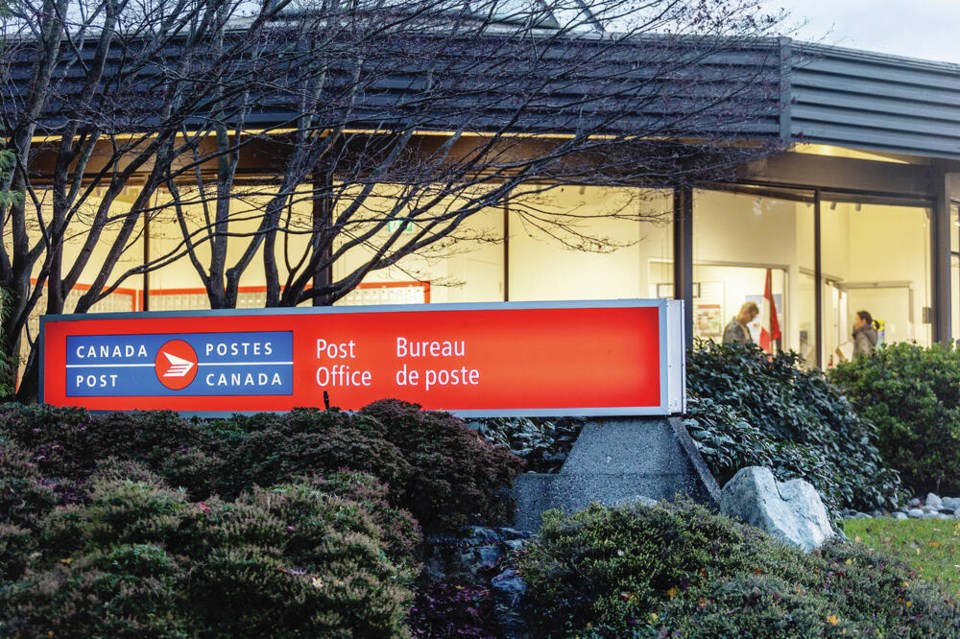I mailed a paperback to Edmonton last week.
The postage cost $21, more than the book itself.
No, I told the postal clerk, I don’t want you to charter a jet and read it to them in person. Just chuck it in a truck with the other presents.
OK, I shouldn’t have been surprised. People who mail packages regularly are used to the prices. It’s only those of us whose parcel-shipping is limited to the lead-up to Christmas who swallow our gum.
Actually, those who are used to the prices still find them hard to swallow.
For more than 20 years, Natalie Weeks has owned beardancecraft.com.
It’s an online business whose bread and butter involves shipping craft- and doll-making supplies from her home in a semi-rural part of the Cowichan Valley to customers around North America.
“Last year I spent over $8,000 on shipping,” she said. “It’s a big hit.”
What really hurts, she said, are the fuel surcharges that sa国际传媒 Post adds to its shipping costs. The surcharges, which are adjusted each Monday, have been around for 20 years but really became noticeable to Weeks as pump prices soared this year. As they rose, her orders fell.
She took another hit Monday when fuel surcharges for domestic delivery reached 39.5 per cent, up half a point from the week before. (The rate for international parcel shipping is 23 per cent.)
“It’s nuts,” she said Wednesday. She can’t understand how sa国际传媒 Post can justify a $4.20 surcharge on a package travelling just 70 kilometres to a customer in Metchosin. “I think it’s a money grab, honestly.”
Courtenay-Alberni MP Gord Johns feels the same way. He rose in the House of Commons this week to demand that the federal government force the post office to give consumers a break and drop the charges this Christmas. Families are having trouble as it is and shouldn’t be wobbled by the cost of sending gifts to loved ones, he said. “It’s price-gouging.”
For its part, sa国际传媒 Post says year-round fuel surcharges have become standard practice in the shipping industry. “We understand the impact this can have on customers and we therefore work to reflect current pricing,” the corporation said in a statement. The rate is tied to the cost of diesel, ranging from a 20 per cent surcharge when the price per litre is $1.50 to 45 per cent when it tops $2.51.
This week, diesel was pegged at $2.30. Note that sa国际传媒 Post’s 39.5 per cent rate was comparable to FedEx’s. Also note that the post office lost buckets of money last year.
Johns contends that the fees are disproportionate to the actual impact of rising fuel costs. In any case, he said, the surcharges are too hard on inflation-battered families and small businesses.
The MP bristled when federal cabinet minister Helena Jaczek replied to his Commons question by saying that the post office operates at arms length from government.
“The Liberals want to sit on the sidelines and say ‘It’s not our problem, it’s a Crown corporation.’ ” Pffft, he said — it’s a taxpayer-owned outfit, so the government can intervene if it wants. And if the post office pleads poverty, he said, the Liberals can fund it as needed.
Where would the money for that come from? Johns wants the Liberals to tax the massive profits being recorded by Big Oil, ones that he said have contributed to the “greedflation” driving up energy prices.
“The Liberals need to do more to protect Canadian families and small businesses,” he said.
If that sounds like the standard stuff of partisan politics, to Weeks it still rings true. On Wednesday, she fielded a $22 order from Ontario that was just a wee bit too thick to go as oversized letter mail at a cost of $3.19, so she was looking at $34.75 for shipping (or, more likely, a $20 pre-paid box).
It rankles that sa国际传媒 Post gives a volume discount to large corporations. It feels like she’s subsidizing them when she’s the one trying to keep her head above water.
“It’s not easy,” she said, “to have an online business in sa国际传媒 as a small business.”
>>> To comment on this article, write a letter to the editor: [email protected]



